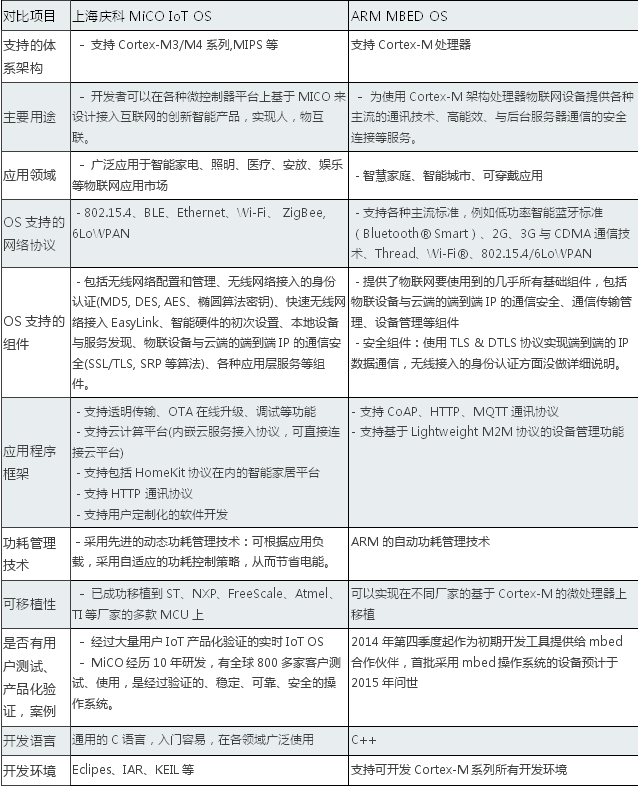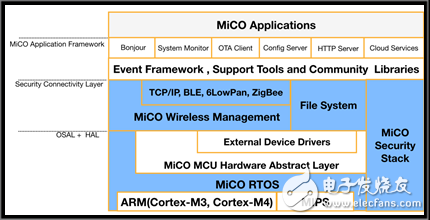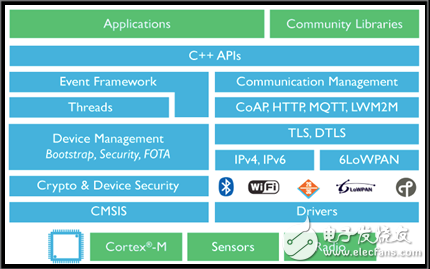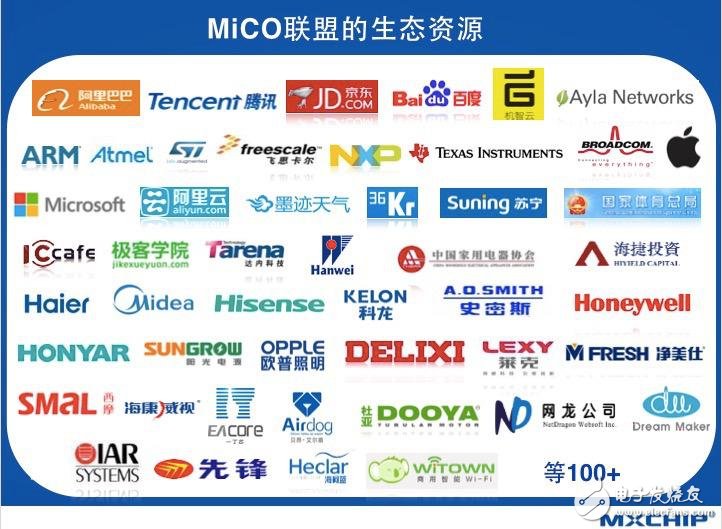With the continuous innovation of technology and the continuous influx of media, capital and talents, the wave of the Internet of Things era is gradually coming. Chips, operating systems and applications naturally become the core products of the information world. Chips are the core of hardware systems. The system is the core of the software system, and the application is the core of the user experience. The Internet of Things will be the next era after the mobile phone. It does not need to undertake the computing work itself. The data processing will be transferred to and handled by the back-end cloud service platform by means of wireless communication technology. From this perspective, for the current IoT practitioners, we can largely rationalize the development path of the industry and the construction of the industry, and truly open the door to the Internet of Things era.
From a technical perspective, the concept of the Internet of Things operating system has gone from behind the scenes to the front, such as Shanghai Qingke launched MiCO's Internet of Things operating system, Microsoft launched Windows 10 IoT Core, Huawei launched the Internet of Things operating system Liteos, ARM released IoT OS mbed, etc., has become a pioneer in the Internet of Things. To this end, the author compares Shanghai Qingke MiCO with ARM's mbed to find the real needs of the Internet of Things.

It can be seen that MiCO OS and mbed OS are slightly different in architecture. To a certain extent, Shanghai Qingke and ARM provide smart hardware developers with more than just IOT OS, but an ecosystem. For smart hardware developers, choosing the IoT operating system is only the first step. Building a mature and open IoT ecosystem based on the Internet of Things operating system is an indispensable part of the industry to achieve cooperation and win-win. ARM introduced the mbed IoT device platform, which mainly includes the mbed operating system, the mbed device server, and the mbed community. ARM provides developers with a free mbed operating system, authorizes them to use mbed device servers, and provides them with the technical support needed for comprehensive hardware development to help developers quickly develop products.

Figure 1: MiCO OS Architecture

Figure 2: mbed OS Architecture
According to official data from ARM, the ecosystem of mbed IoT device platform partners is gradually expanding, covering partners in various fields such as chips, modules, OEM foundry, system integration, and cloud services. The value of mbed is more reflected in its more powerful and flexible development environment and development tools. The mbed OS is available to developers for free development and support for the ecosystem. However, as can be seen from the list of partners, the mbed OS ecosystem is still in its early stages. After all, there are not many developers and partners who actually use the mbed IoT device platform. In addition to technical issues such as price and energy consumption, its stability, cost, safety and other issues need to be further verified. Therefore, these are the issues that mbed will face and need to solve next. In particular, the ARM mbed IoT device platform is oriented to the global IoT market, but there is no definitive news on how to develop the Chinese market. After all, the Internet of Things will involve issues such as information security and servers.

Figure 3: Schematic diagram of the mbed ecosystem
Different from ARM mbed, Shanghai Qingke has low-power Wi-Fi module technology experience, and has accumulated more than 800 customer groups from all over the world, which has a large market base. Mr. Wang Yonghong, CEO of Shanghai Qingke pointed out that “Qingke is not just a simple middleware, but an ecosystem. In order to facilitate customers to directly use MiCO to connect to cloud service providers, Qingke has cooperated with thirteen cloud service providers. There are domestic suppliers such as Ali Smart Cloud, as well as foreign service providers such as Ayla.†With the strong resources of Ali, Shanghai Qingke has established a MICO alliance with chip OEMs, cloud service providers, downstream vendors and hardware developers. To achieve an ecological chain. It is worth mentioning that Alibaba's intelligent strategy shows that in 2015, it will strive to build a smart life ecosystem. Alibaba plans to use Alibaba Cloud's data platform, YunOS system and MiCO operating system in the cloud, network, mobile, and equipment. Interoperability enables users to get a better user experience. There is no doubt that members of the MiCO Alliance will benefit from it.

Figure 4: Ecological Resources of the MiCO Alliance
In general, as the application of IoT becomes more and more extensive and complex, and the division of labor in the industry chain becomes more and more detailed, everyone wants to build an ecosystem, but how to operate the ecosystem becomes a consideration for every company. What Shanghai Qingke is doing is to tie the foundation and build the technical threshold. Just like the city wall, it will cooperate with more chip companies, cloud service providers and downstream manufacturers to build a complete industrial chain and provide full support for IoT application developers. Directional service. On one side is a seemingly powerful but not yet fully mature mebd ecosystem; on the other side is the increasingly mature MiCO consortium and ecosystem with strong BAT background support. I believe that everyone will make the right choice according to their own needs.
This article is selected from the "Wireless Communications Special Issue", more quality content, download now
1.HI tech integrated design, put Solar Panel,led light,controller and battery all in one box,without any cable, very easy for shipment , installation and maintenance
2.Eco friendly with Solar power supply
3.this design is to put high efficiency monocrystalline silicon solar panel,LED lamps,long life Lithum battery and controller all in one box
4.Different power of the light,meet the different requirements used in the road,house or other sites
5.From 15W up to 100W for LED lamps
Integrated Solar Street Light,Integrated Solar Led Street Light,All In One Solar Led Street Light,Integrated Solar Light
Yangzhou Beyond Solar Energy Co.,Ltd. , https://www.ckbsolar.com
